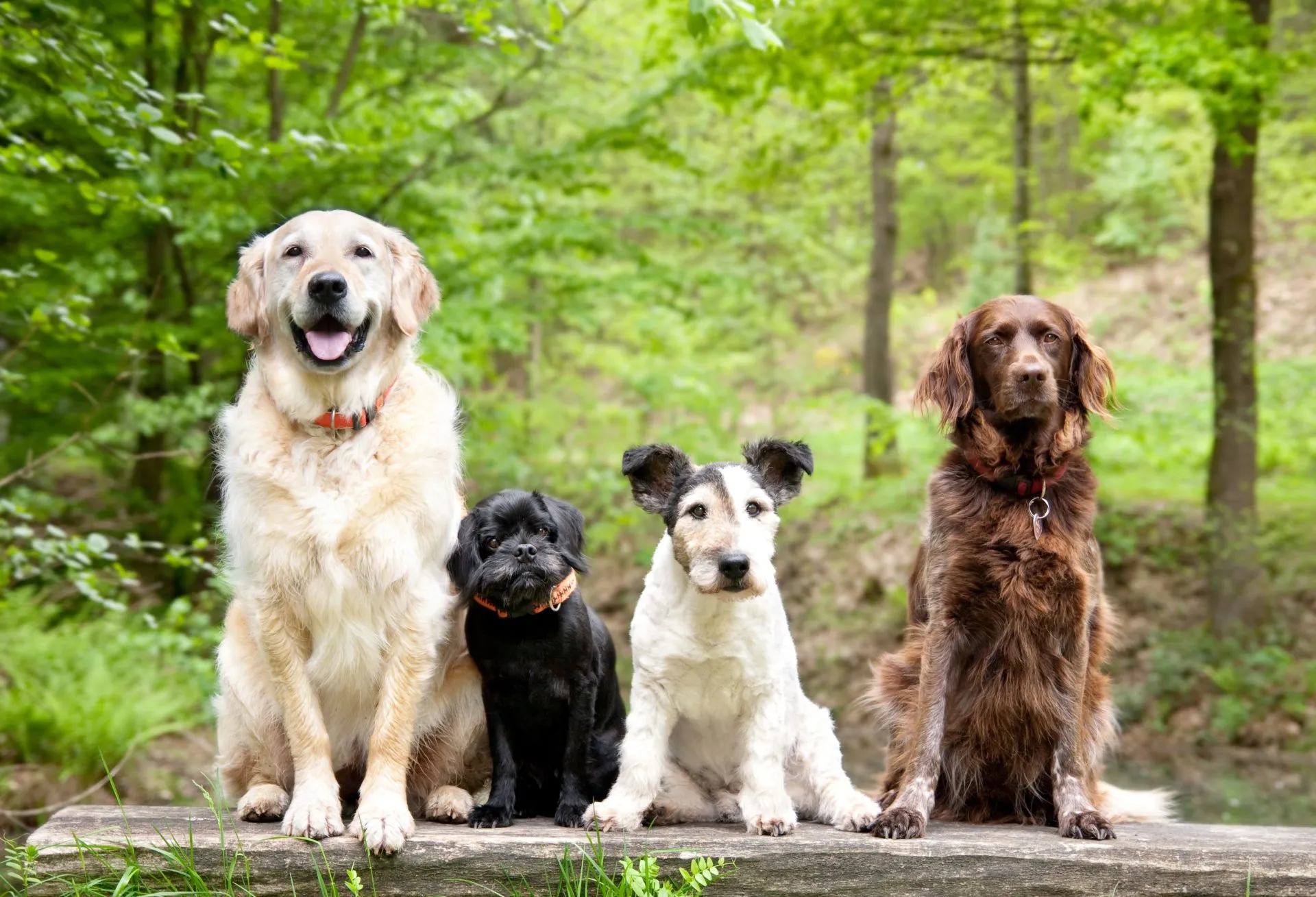Did you know that the first week of October is Walk Your Dog Week? This is a wonderful time of year to take a nice long stroll with your canine pal. In fact, there’s even a special day dedicated to it called Walk Your Dog Day! The cool weather, beautiful foliage, and seasonal decorations are perfect for walking Fido! Just be sure to put your pet’s safety first. Read on as a local Salem, VA vet offers tips on walking your dog.
Training
All dogs should know basic commands, such as Sit, Stay, Heel, Come, and Lay Down. This is very important, both for petiquette and safety. After all, you want to be able to stop your furry buddy from racing off if you accidentally drop his leash!
Gear
Make sure Fido has a good, sturdy leash, one that won’t snap if he suddenly lunges for the neighbor’s cat. Collars are fine for most dogs, but some pups need other gear. For instance, if your canine companion is a small dog or a brachycephalic pooch, like a pug, he’ll be better off in a harness. Retractable leashes can be great, but they aren’t right for every situation. For example, you don’t want to use them on the side of a busy road. Your furry friend could run into traffic if the mechanism jams!
Paw Care
Don’t forget that Fido is barefoot! Dogs’ paw pads are very sensitive. Your pet could get painful burns or blisters by running on hot or harsh surfaces in summer. In winter, snow, salt, sand, and ice can cause painful paw abrasions. Keep your pooch on soft ground as much as possible, and use paw balm to protect his furry feet. If your dog experiences any paw injuries or mobility issues, our veterinary rehabilitation services can help.
When walking on the side of a road, always keep your dog to the outside. Fido is pretty short, and easy for drivers to overlook. Stay away from potentially-dangerous areas, such as riverbanks. If you like to listen to music while walking your furry pal, keep the volume down, so you can hear what’s going on around you. Last but not least, always take a phone with you.
Night Walks
Be extra vigilant when you take your canine buddy out after dark. We recommend using bright, reflective gear and clothing. Stick to safe, well-lit paths, and don’t venture too far from home.
Our Advice on Walking Your Dog in 2024
How long and how often should you walk your dog?
The optimal duration and frequency of dog walks depend largely on the breed, age, and health of your dog. Generally, dogs benefit from at least 30 minutes to 2 hours of walking daily, divided into one or more walks. Younger, more active breeds may require longer and more frequent walks, while older or health-compromised dogs may need shorter, gentler outings. Consistent daily walks not only support physical health but also provide mental stimulation and behavior management for your canine companion. Adjustments should be made based on your dog’s individual needs and veterinary advice.
What are some signs that your dog is getting tired or overheated during a walk?
Signs that a dog is becoming tired or overheated during a walk include excessive panting, drooling, or labored breathing. A dog might also display reduced responsiveness to commands, slower movement, or frequent stops. Overheating can lead to more serious symptoms such as disorientation, vomiting, or collapse. If these signs appear, it’s crucial to provide water, seek shade, and cool the dog down gradually. Always monitor the dog closely during walks, especially in warm weather, to prevent heat exhaustion, which can be life-threatening.
How do you properly introduce your dog to walking on a leash?
Introducing a dog to walking on a leash should start with familiarization in a comfortable, distraction-free environment. Begin by letting the dog wear the collar or harness around the house, allowing them to get used to the feel. Gradually attach the leash and let them walk freely with it dragging behind under supervision. Progress to holding the leash, applying gentle guidance. Reward calm behavior and compliance with treats and praise to reinforce positive associations. Short, frequent sessions are key to building confidence and ensuring the dog feels secure and responsive on the leash.
What should you do if your dog becomes aggressive or fearful during a walk?
If a dog shows aggression or fear during a walk, it’s crucial to first ensure safety by increasing distance from the trigger, such as other animals or strangers. Remain calm and avoid punishment, as it can intensify the negative emotions. Distract the dog with commands they know well to regain focus and calmness. Consider using treats to reinforce calm behavior if the situation allows. After the incident, analyze what triggered the response and work on gradual desensitization with the help of a professional trainer. For persistent issues, consult a veterinarian or a behaviorist.
How can you incorporate training exercises into your regular walks?
Incorporating training exercises into regular walks enhances a dog’s obedience and engagement. Use walks as opportunities to practice basic commands like ‘sit,’ ‘stay,’ ‘come,’ and ‘heel.’ Introduce these commands at intervals during the walk, rewarding compliance with treats or praise to reinforce positive behaviors. This not only improves a dog’s attentiveness but also makes walks more interactive and mentally stimulating. For added challenge, incorporate obstacles or changes in pace. Consistent practice during walks can significantly improve a dog’s responsiveness and overall behavior both on and off the leash.
Is your pet due for an exam, vaccinations, or parasite control? Please contact us, your Salem, VA vet clinic, anytime. We’re here to help!



